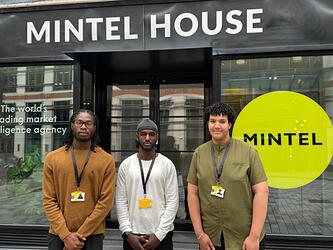What’s the story here?
What’s the story here? How often have we heard that phrase or asked ourselves that question during our careers as insight professionals? We’re hard-wired to translate our findings into a clean narrative that conveys a realistic representation of the data uncovered and places it in context. This means we can seamlessly move along the continuum of wisdom – from fact to knowledge to understanding.
The trouble, and if you excuse the terrible pun, is that this is only part of the story. We’ve become lazy in our storytelling assumptions. Having a linear narrative with no loose ends doesn’t make an effective story in the corporate context.
Telling stories in boardrooms to MBAs isn’t the same as telling stories in bedrooms to babies. Yes, they may share the same narrative arc, but unlike recreational stories, our business stories need to enable or catalyse corporate action. This may sound obvious but the consequences of making this mistake are profound if our stories are to be heard and remembered.
Our research storytelling is more akin to factual programming or documentary film-making. It’s not for entertainment (though we shouldn’t discount the benefits of an entertaining narrative). Serious or factual storytelling needs to persuade and enhance the corporate decision-making process. It’s the presentation of fact with a narrative woven in and around it that allows the listener to extrapolate what they see to a broader universe and make sense of the otherwise complex. David Takami puts it most elegantly in his review of Malcolm Gladwell’s new book ‘Talking to Strangers’ – he says Gladwell has ‘…an uncanny ability to simplify without being simplistic.’
All very well, but why should you care about this?
Well, there is an emerging and growing body of evidence of how we receive stories at work. Despite significant advances in the availability of data and its presentation, plenty of evidence suggests that our ability to make the right call in business is as variable as ever. In recent months you could have read the Harvard Business Review’s ‘6 Reasons We Make Bad Decisions and What to Do About Them’ or McKinsey’s ‘Decision Making in the Age of Urgency’ to confirm this. The human condition at work, especially in the context of receiving new knowledge, is both complex and in many ways, flawed. Smart people continue to make poor decisions.
While issues like time scarcity or data paralysis negatively impact corporate decision-making, emerging thinking in behavioural science – usually employed to help understand consumer decision-making – can help us re-assess how we better communicate insights. While there are a multitude of cognitive biases, for our storytelling purposes they can be collapsed into four main areas of interest:
- Processing information – we look for details that re-inforce our own opinion
- Finding meaning – we oversimplify and are poor at probabilities
- Retaining memory – we self-edit poorly, work on generalities and preserve the status quo
- Acting quickly – we support current initiatives and project our current mindset.
To overcome these barriers, the quality and delivery of our factual or research stories needs to be as high as possible. This knowledge also gives us license to re-configure how we tell our stories to gain maximum impact. There are various approaches that can work, but in summary we should think about the following:
Avoid the anchoring of previous research
Don’t make research feel like research. Give it a new look and feel. Develop more visual and multi-faceted channels. Be interactive.
Don’t start writing your story in PowerPoint
The cognitive style of PowerPoint (headlines and bulleted lists) – especially when allied to corporate PPT templates – reduces the analytical quality of the story by weakening verbal reasoning. So, start your thinking elsewhere. Use Word, or if you are more visual, use sticky notes on a wall and move them around until you find the narrative and content buckets you want. Then compile your story thematically and visually in PowerPoint (or other slideware). Augment with more detailed supporting documents if you need.
Take control of the process
Try to change the physical environment you’re presenting in. Debrief offsite. Ban phones. Unconscious bias is a human truth we should address directly. Highlight the contradictions of decision-making behaviour to participants so that they can consider what thoughts they have that may be influencing their perspective.
Extend the moment of engagement
Seed the content. Warm up the audience so that any presentation is bookended with introductory or framing content beforehand and developmental content and further evidence afterwards. This repetition will help overcome natural confirmation bias.
Find and use numbers
Business leaders are frequently both over-optimistic and prone to making poor comparisons. However well a story is told, action is made more likely by accentuating the approximate value of action or inaction. Contextualising parallel data sources and being transparent on what data is and isn’t covered by our story adds credibility to the stories we tell and enhances the likelihood of action.
Matthew Sell is chief operating officer and Tim Werger is senior research executive at Northstar. Matthew and Tim are presenting at the MRS &More conference on Thursday 24th October.

We hope you enjoyed this article.
Research Live is published by MRS.
The Market Research Society (MRS) exists to promote and protect the research sector, showcasing how research delivers impact for businesses and government.
Members of MRS enjoy many benefits including tailoured policy guidance, discounts on training and conferences, and access to member-only content.
For example, there's an archive of winning case studies from over a decade of MRS Awards.
Find out more about the benefits of joining MRS here.













0 Comments